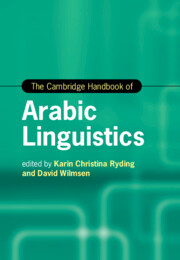Book contents
- The Cambridge Handbook of Arabic Linguistics
- Cambridge Handbooks in Language and Linguistics
- The Cambridge Handbook of Arabic Linguistics
- Copyright page
- Contents
- Figures
- Tables
- Notes on Contributors
- Acknowledgements
- Abbreviations
- Introduction
- Part I Arabic Applied Linguistics
- Part II Arabic Variation and Sociolinguistics
- Part III Theoretical and Descriptive Studies
- Part IV Arabic Computational and Corpus Linguistics
- Part V Arabic Linguistics and New Media Studies
- Part VI Arabic Linguistics in Literature and Translation
- Index
- References
Introduction
Published online by Cambridge University Press: 23 September 2021
- The Cambridge Handbook of Arabic Linguistics
- Cambridge Handbooks in Language and Linguistics
- The Cambridge Handbook of Arabic Linguistics
- Copyright page
- Contents
- Figures
- Tables
- Notes on Contributors
- Acknowledgements
- Abbreviations
- Introduction
- Part I Arabic Applied Linguistics
- Part II Arabic Variation and Sociolinguistics
- Part III Theoretical and Descriptive Studies
- Part IV Arabic Computational and Corpus Linguistics
- Part V Arabic Linguistics and New Media Studies
- Part VI Arabic Linguistics in Literature and Translation
- Index
- References
Summary
Arabic linguistics is a field that has both expanded and shifted over the last fifty years. The coming to the fore of Arabic sociolinguistics, variation theory, corpus linguistics, language acquisition, intercultural pragmatics, and Arabic media studies has enlarged the nature of research topics, strategies, and results so that both spoken and written forms of Arabic have come to be examined from multiple perspectives. Moreover, the development of social media and discussion platforms has had a profound effect on the interface of spoken and written language that has yielded new forms of Arabic discourse. This handbook brings together articles on a range of traditional and contemporary topics from a wide spectrum of research interests. We hope that the integration of new and traditional will represent both the broadened horizon for Arabic linguistic analysis and new congruence within this disciplinary area.
- Type
- Chapter
- Information
- The Cambridge Handbook of Arabic Linguistics , pp. 1 - 8Publisher: Cambridge University PressPrint publication year: 2021

